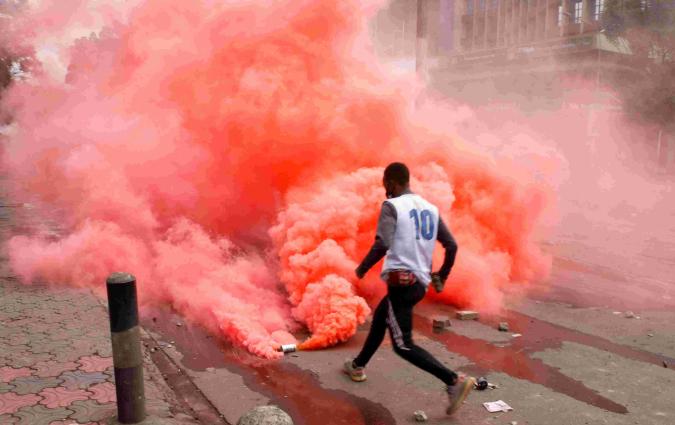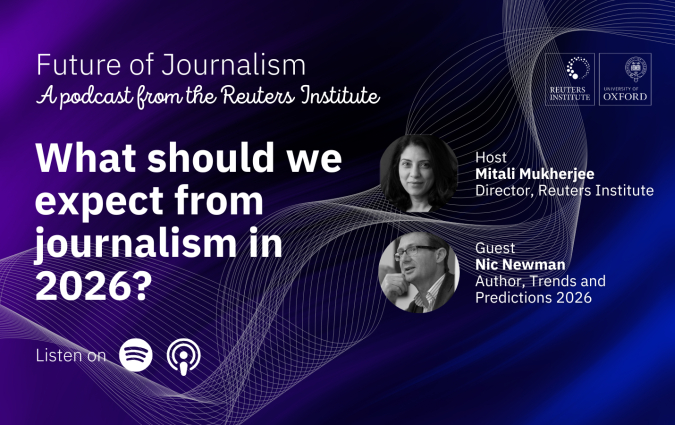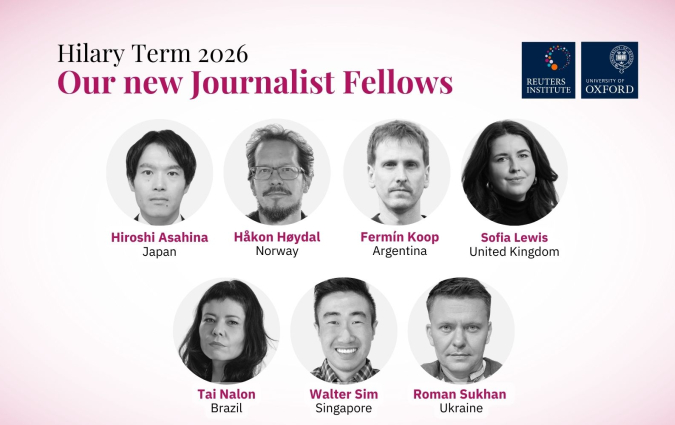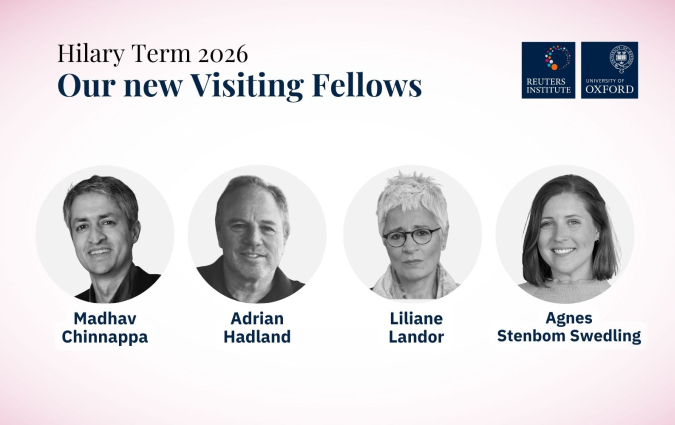Cutting through the fog of war: how fact-checkers from 70 countries are fighting misinformation on Ukraine
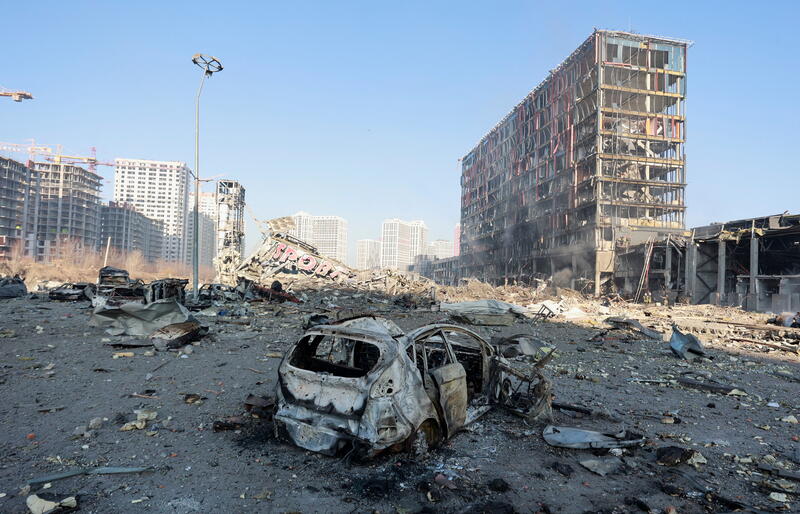
A shopping center shelled by the Russian army in Kyiv. REUTERS/Serhii Nuzhnenko
Clara Jiménez Cruz is the co-founder and CEO of Maldita.es, a Spanish nonprofit fact-checking organisation. In the early morning of 24 February, as Vladímir Putin’s tanks invaded Ukraine, Clara and her colleagues created a database to store every claim they debunk about the war. They immediately shared the database with colleagues from dozens of fact-checking organisations around the world. The goal was to collaborate, to appreciate emerging narratives and to avoid wasting resources debunking the same claims.
The result is ukrainefacts.org, a public website updated by journalists from 74 news organisations in 70 countries where readers can find any claims that have already been debunked. The website includes an interactive map which any outlet can embed in its own website. It features 738 fact-checks at the time of this writing, a figure which will likely keep growing in the next few weeks. I spoke with Clara about this collaborative effort and about the challenges fact-checkers are facing as they try to tell truth from false during the war in Ukraine.
Q. You and your team started this project a few hours after the invasion started. Why?
A. Just the scale of misinformation was incredible. It was crazy. Luckily, this time we were prepared because we had the experience of the pandemic and we knew how big of a difference collaboration could make. We started working together in a very organised way almost the same minute Russian tanks crossed the Ukrainian border. Being fast paid off.
We knew the attack would be accompanied by a wave of false claims. We also knew that these hoaxes would not only be circulating in Spain but throughout the world. So we created a database and allowed more than 100 fact-checkers worldwide to start collaborating with us.
Q. You’ve participated in quite a few collaborative projects. How would you say that experience has shaped your response to this crisis?
A. Mis- and disinformation circulates very fast in every crisis and one of the ways to limit its impact is to debunk it as quickly as possible. Here’s why collaboration between fact-checkers is key. This database allows us to know when each claim began to circulate in each country and helps us not to duplicate efforts investigating the same things.
When it came to COVID-19, it could take weeks before a false claim jumped from one country to another. When it comes to the war in Ukraine, a claim is going viral in separate parts of the world at the same time. Sometimes the same claim circulates on the same day in 17 different countries. This helped us to have a clear understanding of the kind of data we needed, how to get organised, what to look for in terms of metrics and how to spot narratives.
Q. So this project wouldn't have happened without COVID-19…
A. It wouldn't. This project is the result of all the things we learnt during the pandemic. If we had known what was about to happen in January 2020, we would have started a similar collaborative project much earlier and in a more structured way.
There is still a long way to go in terms of collaboration: fact-checkers are extremely different around the world. They operate in different political and media environments and their methodologies differ from one another. Even their philosophical views on how to operate differ. But we share the same ethical and journalistic values. Hopefully UkraineFacts.org is a first step to create more structured responses to the next crises in a collaborative manner.
Q. The project has been live for almost one month now. What have been the most difficult challenges during this time?
A. The sheer amount of mis- and disinformation was quite overwhelming from the beginning. So it was all the more important to be clear about what we were asking fact-checkers to do. We needed to be very precise about how to use and feed the database. As the invasion advanced, we needed to adapt to more complex forms of fakery: hoaxes which were harder to debunk, investigations that required OSINT tools and Russian or Ukrainian language skills.
Once we started to find the same claims over and over again, we had to develop internal automated matching tools so we could identify matches without depending on journalists’ memory. For our team it has also been a real challenge to keep up to date with other projects and deadlines. At the end of the day, we have limited resources. The International Fact-Checking Network (IFCN) team has been vital and super helpful throughout the process.
Q. What would you do differently next time?
A. The project has been a huge success. But it’s important to acknowledge this has been an emergency solution. Having over 100 organisations working on a spreadsheet is not ideal. Hopefully, in the future we will be able to work on a more structured database, with normalised categories that enable us and researchers to better investigate and navigate the data, and to introduce technology that automates some of the processes that today are still done manually.
There’s a key aspect we need to agree upon: governance. Who owns the database? Who gets access to it? For which purposes? I hope the fact-checking community creates spaces to talk about this because there is a lot of potential in this kind of collaboration, both for the impact of fact-checking and academic research in the field of mis- and disinformation.
Q. Dozens of newsrooms are involved in the project. How do you decide which newsroom debunks what? And how do you manage to make any content available in other languages?
A. Every fact-checker makes their own decisions depending on what’s more important for their audiences. It makes sense that fact-checkers in India fact-check what their audiences are seeing, while fact-checkers in Spain debunk what’s going viral in Spain.
And yet fact-checkers benefit from being able to see each other’s work. If a video that’s being circulated as current is found to be at least 8 years old by another fact-checker and you see it circulating in your country, there is a lot of work you don’t need to replicate. These things make us all more efficient. Being all signatories of the IFCN code of principles guarantees that everyone follows the same methodology along the process.
Language is trickier and is still an issue. Every fact-checker is putting the title of their articles into the database in English, and we’re also translating the frontend on ukrainefacts.org into Spanish. It would be wonderful to be able to cover other languages so that newsrooms and audiences around the world could embed these fact-checks into their own webpages, but our resources are limited. Around 300,000 users have clicked on the map showing debunked claims around the world.
Q. So far you’ve debunked 753 claims. Which kind of themes and formats are the ones you’ve found more often in the last three weeks?
A. This wave is much more visual in format: lots of video in particular, but also pictures. As to themes, you find hoaxes that favour either the Russian or the Ukrainian side: emotional appeals that were fake, attacks that didn’t really happened, nazi sympathies accusations through image manipulation…
Information is being weaponised as an attack tool but also as a defensive weapon. So we are also seeing a lot of propaganda praising unidentified Ukrainian heroes such as the Ghost of Kyiv or false stories like the one about the Snake Island heroes.
Q. Have you noticed any changes in the themes over the last few weeks? For example, more misinformation about refugees or about biological weapons in the last few days.
A. In the beginning there were a lot of videos and images of bombings that had nothing to do with Ukraine. In the last couple of weeks, we’ve started to see more content related with refugees and prisoners, and stories around victims. Somehow, we’ve gone from the general to the much more specific stories. What hasn’t changed since the beginning is the posts claiming that [Ukrainian President] Volodymyr Zelensky has fled the country and or that he has been killed.
As time goes by, we see content that is harder to fact-check. Mis- and disinformation is getting more complex and sources are getting harder to reach or trust. We are also seeing actors that portray themselves as fact-checkers. They falsely debunk claims that they say the Ukrainians have shared but that have never been circulated.
Q. You’ve said recently that war-related misinformation is travelling from country to country much faster than COVID-19 misinformation. Why would you say this is the case?
A. When this kind of transnational jump happened during the pandemic, it normally took a month or so. With this war, the time frame is around 48 hours. We are also seeing false claims being widely distributed in countries that are not even in Europe and with not so much direct relationship in the conflict. I would assume that this was to be a huge thing in Germany or Poland. But in India, Kenya or Brazil? I didn’t expect it. This is one of those things that needs much more investigation. My personal hypothesis has a lot to do with organised disinformation campaigns. For example, in Spanish language we’ve seen how traditional pandemic deniers are now hugely sharing pro-Putin disinformation.
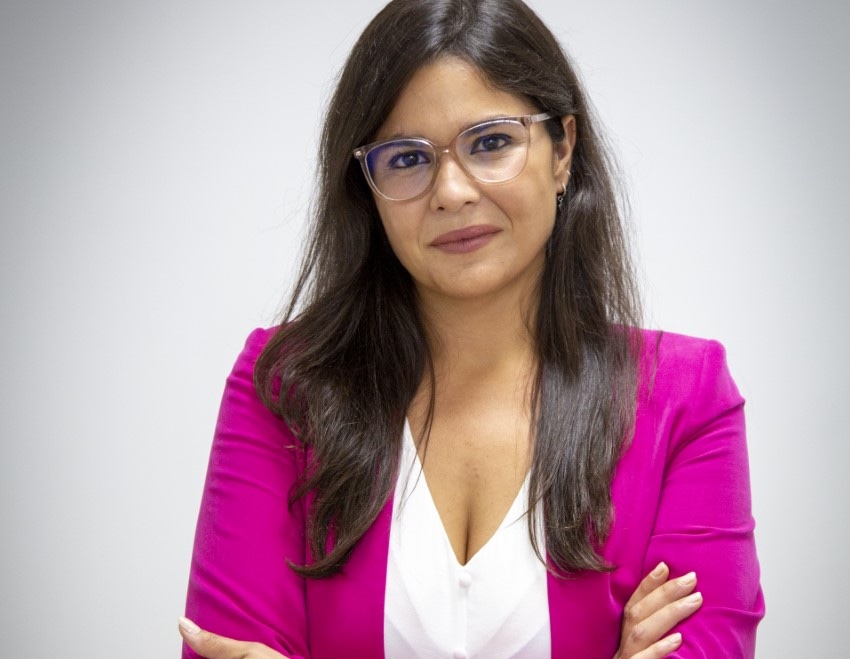
Q. One of the challenges journalists face is state and non-state actors sharing visual content from other countries from previous conflicts as something that’s happened in Ukraine today. Which kinds of tools does your team use to verify these claims?
A. The most basic stuff is to check this against databases where we can see if the video was shared a few years back. But we can also use forensic tools to check the sun position in the sky or the shape of the terrain in order to verify some of them. These are tools fact-checkers know how to use but we are also partnering with OSINT professionals around the world to be faster in our job fact-checking content.
Q. According to our own research, most (59%) of the misinformation in a sample analysed in the first month of the pandemic involved various forms of reconfiguration, where existing and often true information is spun, twisted, recontextualised, and not completely fabricated. Is this kind of reconfigured misinformation prevalent now too?
A. This is a general trend now that makes our work harder but it is a logical choice from the point of view of the people pushing false claims. Debunking those more complex pieces of content requires more skills and more time.
However, during the war in Ukraine, we’ve seen a lot of pretty straight-forward fakery as well: extracts from films and documentaries together with images that are not current or missile attacks that are not from Ukraine. We’ve even seen a couple of video-games portrayed as footage coming from Ukraine.
Q. Craig Silverman reported recently false fact-checking accounts were spreading misinformation about the war and being amplified by Russian state TV. Is this something that has made your job more difficult?
A. Yes. Not only because of the kind of disinformation they manage to push through those methods but also because some people will think they cannot trust fact-checkers in general and that’s a big risk. We shouldn’t ignore the role of Russian state media in these operations. Maldita.es has detected that kind of content circulating in Spain as well, which makes us think that it’s widespread.
Q. Have you detected any efforts by propaganda outlets, activists or other actors to spread false claims about the war? If so, which tactics have they used?
A. They have, but propaganda outlets are normally a little more nuanced than that: their general strategy is to build narratives and sow distrust in institutions. They don’t do it just during the war. It is what they do all the time. We are just paying more attention right now.
An example of this is how RT in Spanish channels denied or ridiculed the invasion of Ukraine: "hysteria", "conspiracy theories"" is what they called it until four days before the invasion was launched. This form of disinformation can’t be fact-checked while it happens, but it generates a state of mind that makes people take positions that they would not necessarily take otherwise.
Q. Debunking war claims is much tougher than checking claims about other issues. How do you protect the mental health of your journalists?
A. This war is putting a lot of pressure on fact-checkers. It is tough for any journalist to work with war imagery. But it’s especially hard for fact-checkers, who have to spend eight hours straight watching terrible footage to fact-check it. We are talking about the kind of footage a producer would not air on TV. At Maldita.es and in other fact-checking organisations we have protocols to limit the exposure to those images and we’ve given extra days off to the people working on the war. But this is something we need to discuss more as an industry.
Q. Have you come across any ethical questions while fact-checking war claims?
A. We’ve come across a few. While there is a clear agreement on things like blurring dead bodies on images to preserve privacy and anonymity, there is not a clear mandate on what to do with war prisoners. According to the Geneva Conventions, it is forbidden to distribute images or IDs of war prisoners. But what if one of the armies is doing that already and a journalist wants to report on them? Is it ok to do it? And what if a fact-checker wants to debunk a false story about a prisoner and it needs the prisoner's official ID and picture to be shared as proof? I don’t have an answer for this. I only have questions. We’ve unpublished fact-checks due to the lack of an agreement on this among our colleagues
Q. What are the next steps for the project? As the number of debunks grows, are you planning on building a search function? Is this something that you’ll keep updating while the war is on?
A. Our aim here is to keep it up even if it’s hard. We need to be able to keep feeding the database so it becomes a comprehensive collection of mis- and disinformation on this war. We need to be better at addressing false and misleading information that circulates in Russian and Ukrainian language. Once the war is over, whenever that happens, this database will be an invaluable resource for researchers to understand information warfare and many other issues.
If you want to know more...
- Watch our seminar with Clara on misinformation in the pandemic
- Check out the website of the Ukraine Facts project
- Learn more the innovative work of Maldita.es in this piece
In every email we send you'll find original reporting, evidence-based insights, online seminars and readings curated from 100s of sources - all in 5 minutes.
- Twice a week
- More than 20,000 people receive it
- Unsubscribe any time




